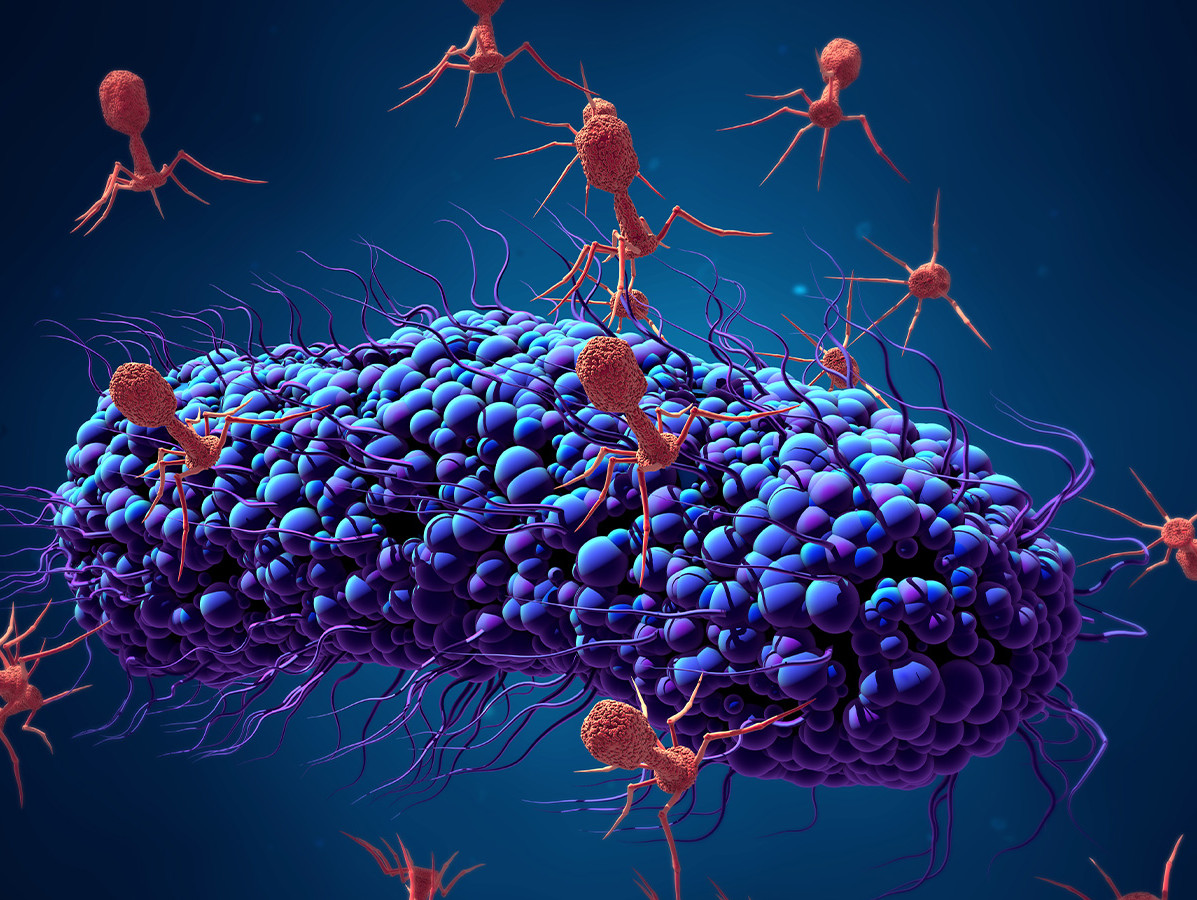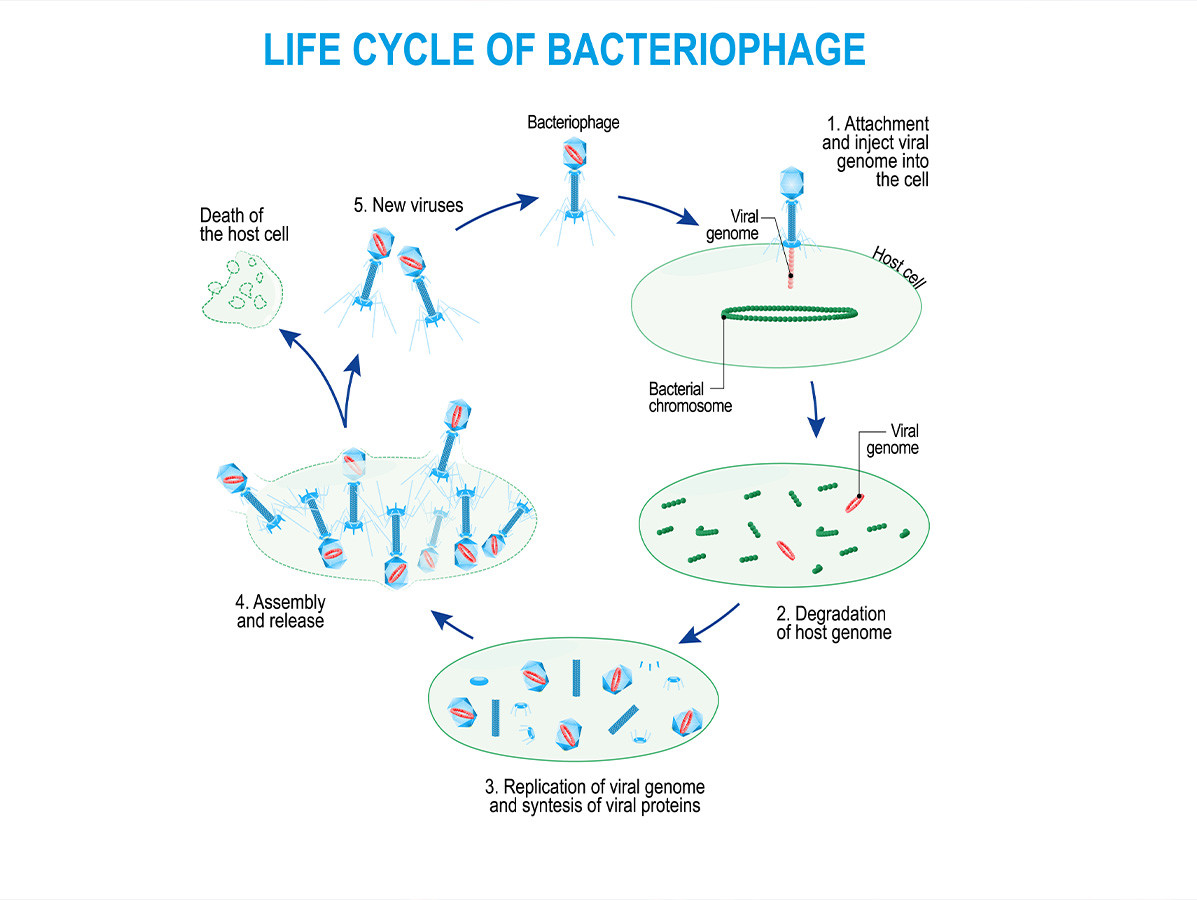
How can you remove stubborn environmental contaminants that - despite carrying out thorough cleaning and disinfection - are still present? Eco2Clean developed two new products for this purpose. With a cocktail of different bacteriophages, you can now kill off the entire spectrum of Listeria and Salmonella strains.
"In practice, we often find seemingly clean production environments at food companies," says Gert Visscher, director/owner of Eco2Clean; a company that supplies cleaning and disinfecting agents and provides support and advice in the field of hygiene and cleaning. "But despite applying a careful hygiene regime, pathogenic infections still occur in production areas. TNO calculates that some 700 infections are recorded each year, which can be linked to about 2,000 cases of illness. Farms where the source of contamination originates are being traced with increasing accuracy. This is thanks to current detection methods and especially being able to link DNA profiles of disease cases from the RIVM database to those from the NVWA database. One example is the Offerman company in Aalsmeer, which was eventually forced to close down as a result of recurrent Listeria contamination. The most common infections are caused by Salmonella, Campylobacter, norovirus and Listeria."
"For the contamination sources Listeria and Salmonella, we have developed biological techniques that completely clean up the source of these pathogens," Gert continues. "Our credo is and remains that good (production) hygiene forms the basis. It is important that surfaces and immediate surroundings of production equipment are cleaned properly and consistently and disinfected with a fast and broad-spectrum disinfectant. It is also important that employees carefully follow personal hygiene rules and the possible introduction of Listeria contamination via raw materials/products, packaging materials and means of transport is minimised. Nevertheless, in a number of cases there are (very) persistent infections, whose source of contamination cannot be completely eliminated despite good hygiene."
"The use of bacteriophages significantly reduces the risk of environmental contamination and thus contamination of the product," Gert explains. "This is because the natural enemy of bacteria are bacteriophages. Each bacteriophage targets one specific bacterium. A bacteriophage to combat Listeria therefore does nothing on Salmonella, or vice versa. In fact, several types of bacteriophage are needed to kill all strains of Listeria. Bacteriophages have only one purpose: to detect a bacterium on which they can multiply and invade. Once there, they multiply many millions of times using the bacteria's DNA, which completely destroys the host. All new bacteriophages then search for new hosts. This cycle repeats itself until there are no hosts left for the bacteriophages and they too die off."

3 case studies
In a cheese processing company, Listeria contamination was regularly found on the floors. At one site with fairly high regularity. Specifically that place was treated with PhytoClean once a week for six months. No contamination was found during that six-month period. During the same period, incidental Listeria contamination was found at other sites that had not been treated.
At a meat cutting plant, despite proper cleaning and disinfection, incidental Listeria was found on plastic plates. The plates had ridges in them; damage caused by the bones in the meat. The plates were treated daily and intensively with PhytoClean for 14 days. After that, the cleaning switched to weekly treatment. Since then, no infections have been found.
A fish-processing plant was regularly suffering from Listeria contamination. Certain parts of the plant were treated daily with PhytoClean. The number of positive samples reduced to zero: no more contamination was present.
Eco2Clean's new products, PhytoClean X8 S (Salmonella) and PhytoClean X8 L (Listeria) are composed of a cocktail of different bacteriophages, which kills off the entire spectrum of Salmonella or Listeria strains. Gert emphasises: "PhytoClean is not a disinfectant. It is a process aid. After rinsing the disinfectant used daily, the surfaces to be treated should be sprayed with a solution of PhytoClean. This product is pH neutral and leaves no residues. To give the active ingredients time to detect and fight the bacteria, no post-rinsing should be done. If many infections are suddenly found, we recommend applying this treatment daily until at least 14 days after the last sample check with a negative result (read: the infection is no longer present). After that, weekly use is sufficient after the last cleaning of the week. PhytoClean should only be applied on surfaces, not directly on foodstuffs."
Mainphoto: ©Design_Cells/shutterstock.com
Source: Vakblad Voedingsindustrie 2023